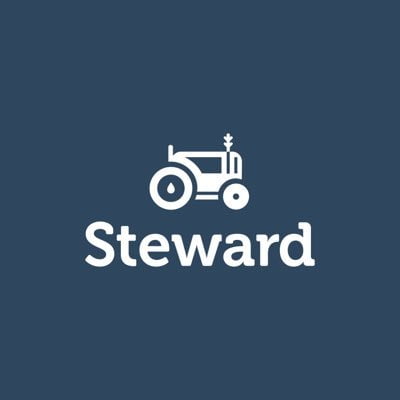Have you ever thought about the value of land before?
Like many things, it’s easy to assume that it’s worth something without giving it too much thought. How much it’s worth will vary quite a bit from place to place and parcel to parcel. However, an easy way to understand the differences in valuation is by looking at the utility of the land. A small patch of grass in the middle of nowhere can only be used for so much, but a city block in the heart of a thriving urban center has a lot more economic potential.
Farmland is a particular type of land that is used for agricultural production. Its value and utility is underpinned by a simple truth – we all have to eat.
It’s not just that though. The supply of productive agricultural land is actually diminishing due to factors like urban expansion and climate change. And part of the reason urban areas are expanding in the first place is because the global population continues to grow, meaning there are more people who will need to eat more food.
Broadly speaking, farms produce two types of crops – row crops and permanent crops. Row crops are planted and harvested each year (think corn and soybeans). Permanent crops are planted, take years of care and growth to bear fruit, and produce food annually for their lifecycle (think apples and almonds).
Ways To Invest
You could choose to go out and directly buy a farm yourself. That has a few challenges though.
The first challenge is that not all land is created equal. What are you trying to grow? Do you have a strategy for who will conduct the actual farm work? How productive is the soil? What are the water rights for the potential farm in question? Will things like elevation or flooding be an issue? Unless you have a good understanding of how to answer these questions, the likelihood that you will be able to make a good investment is quite low.
The second challenge is finding an affordable acquisition. In general, the number of farms has gotten smaller while their size has grown larger. It’s not uncommon for a farm to sell for more than $1M with prices being $10K an acre or more in some markets.
Yikes! Thankfully there are a few investment platforms that provide access to the asset class on a fractional and passive basis. This asset class is still somewhat inaccessible though. The platforms typically require investors to be accredited, don’t provide SEC-qualified offerings, and have minimum investments ranging from $10K-$1M.
Key Characteristic Of Farmland Investments
Farmland is a productive hard-asset. It’s physical land producing real food that real people consume. This generally means that it is not very easy or cheap to buy and sell. It’s the type of investment that may need to be held for 10 years or longer before being able to receive liquidity.
In terms of returns, farmland has historically been a lower-volatility asset without strong correlation to other risk assets like stocks. Actually, one of farmland’s strongest correlations is with measures of inflation. As prices rise, the goods the farm produces can be sold for higher prices, which also increases the economic capabilities and value of the land itself.
In general farmland provides both appreciation and yield. How, exactly, will depend on the deal in question.
For row crops, the long term risk is lower. If there’s bad weather one year, corn can simply be planted anew the following year without necessarily having a carry-over impact. Row crop deals tend to offer higher appreciation of the land and lower overall yields. The yields are based on receiving rent payments from another company operating the land and generating the produce.
Things are different for permanent crops. They typically provide higher yield and lower land appreciation, with more risk and different structure. Since permanent crops are replanted rarely, they need to stay alive and productive over the course of multiple years or decades. If bad weather or pests kill off a tree, its productivity cannot be immediately replaced in the next growing season. Deals for permanent crop farms usually include a small rent payment with other arrangements like crop-sharing agreements between the operator and land owner.
All of these factors have made a very notable investor a big fan of the asset class:
Show more +If you said for a 1% interest in all the farmland in the United States, pay our group $25 billion, I’ll write you a check this afternoon…
– Warren Buffet
Farmland Investing Platforms
AcreTrader

AcreTrader is a platform that allows accredited investors to purchase shares of row crop, permanent crops, and timberland offerings. Minimum investments can be as low as $10,000, but are often higher.
FarmTogether

FarmTogether provides accredited investors with a variety of different types of offerings for their farmland investments. Investments in their crowdfunded offerings start at $15,000. FarmTogether’s offerings frequently feature permanent crops, but they have row crop offerings as well.
Steward

Steward helps provide small farmers with loans raised from investors on their platform. It’s open to non-accredited investors and has a $100 minimum investment.
